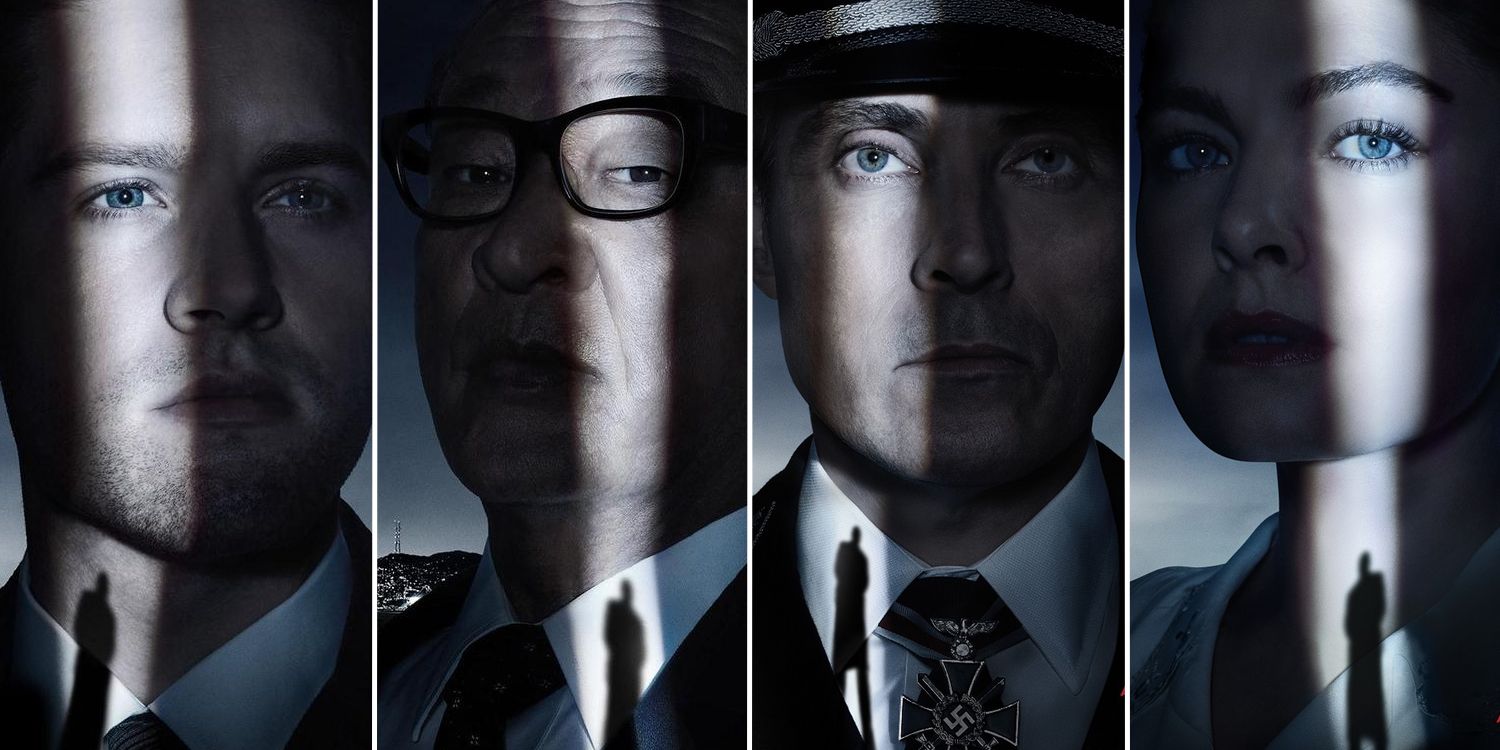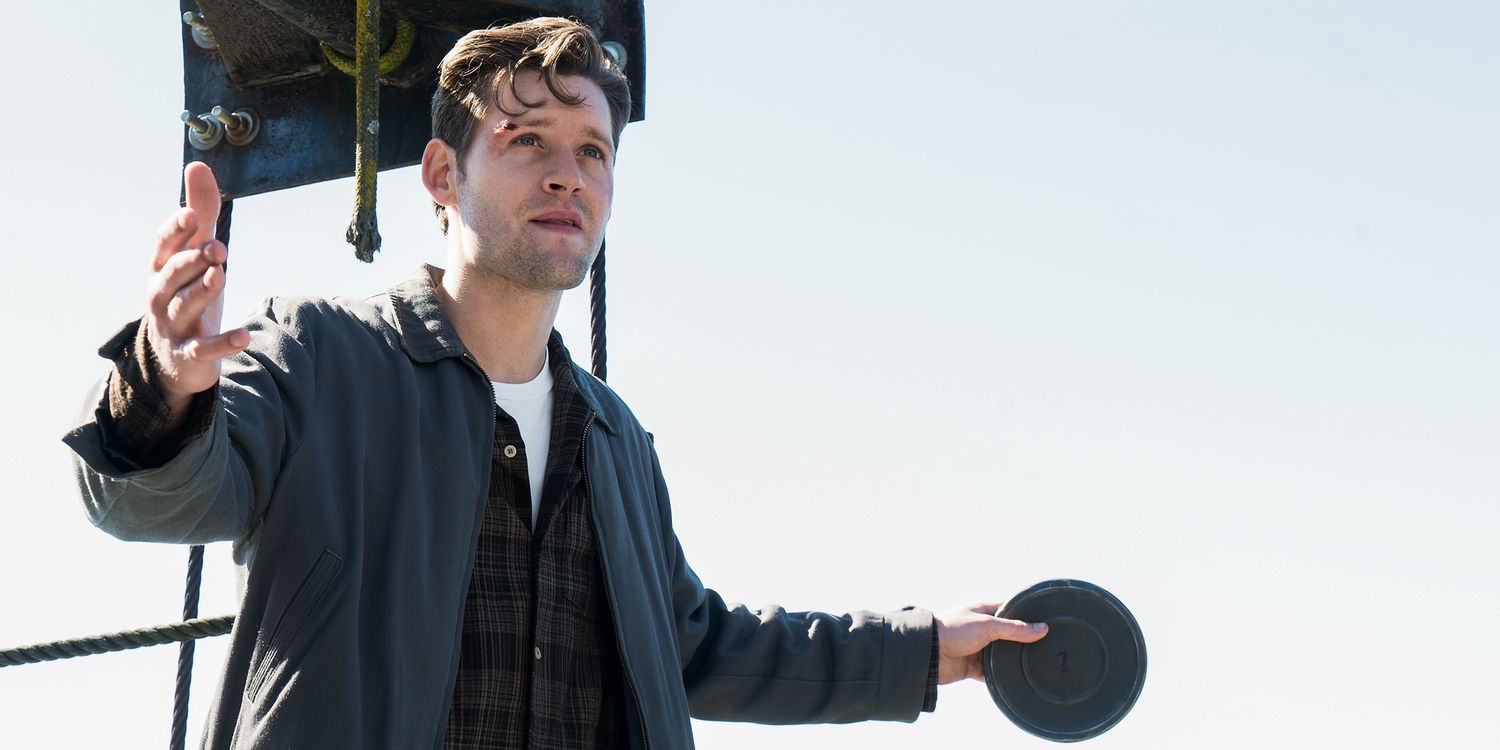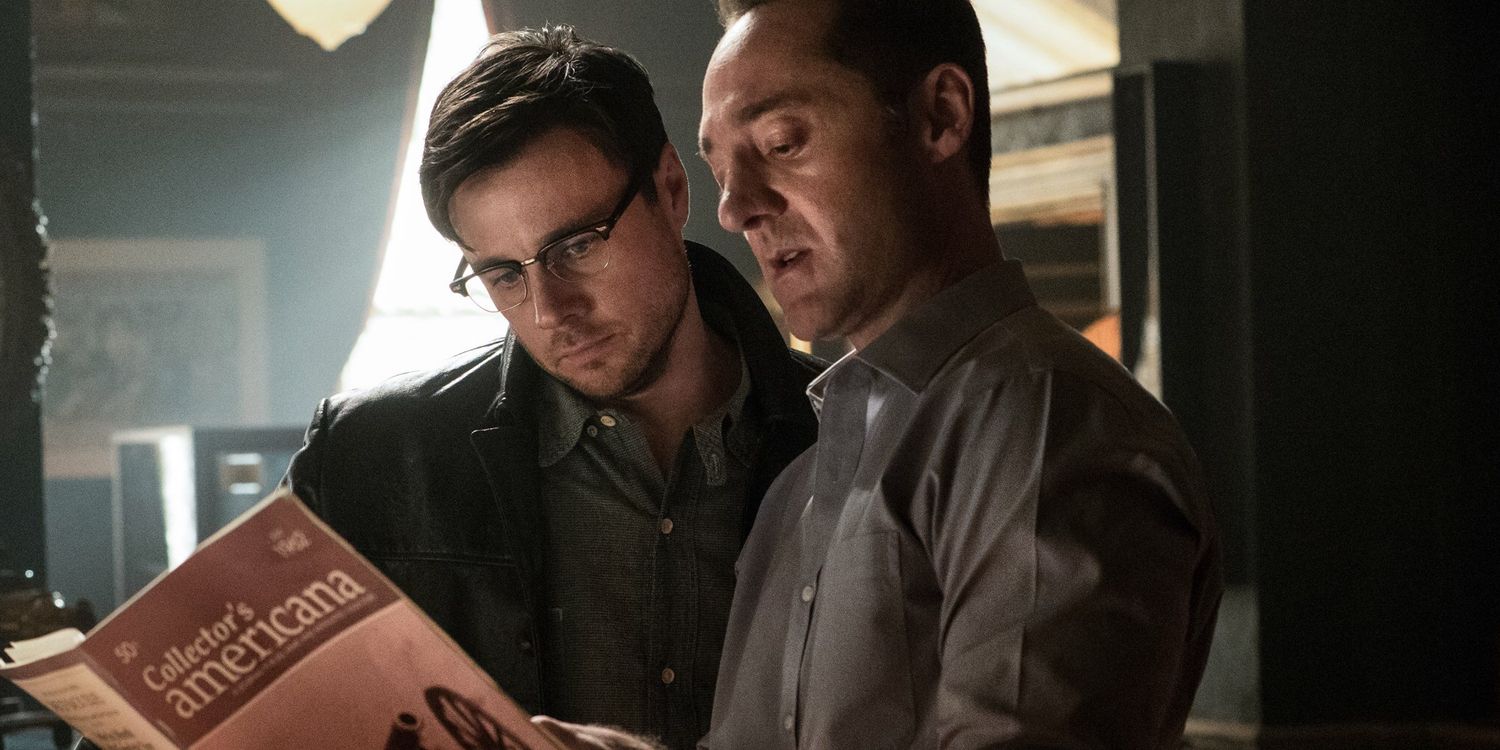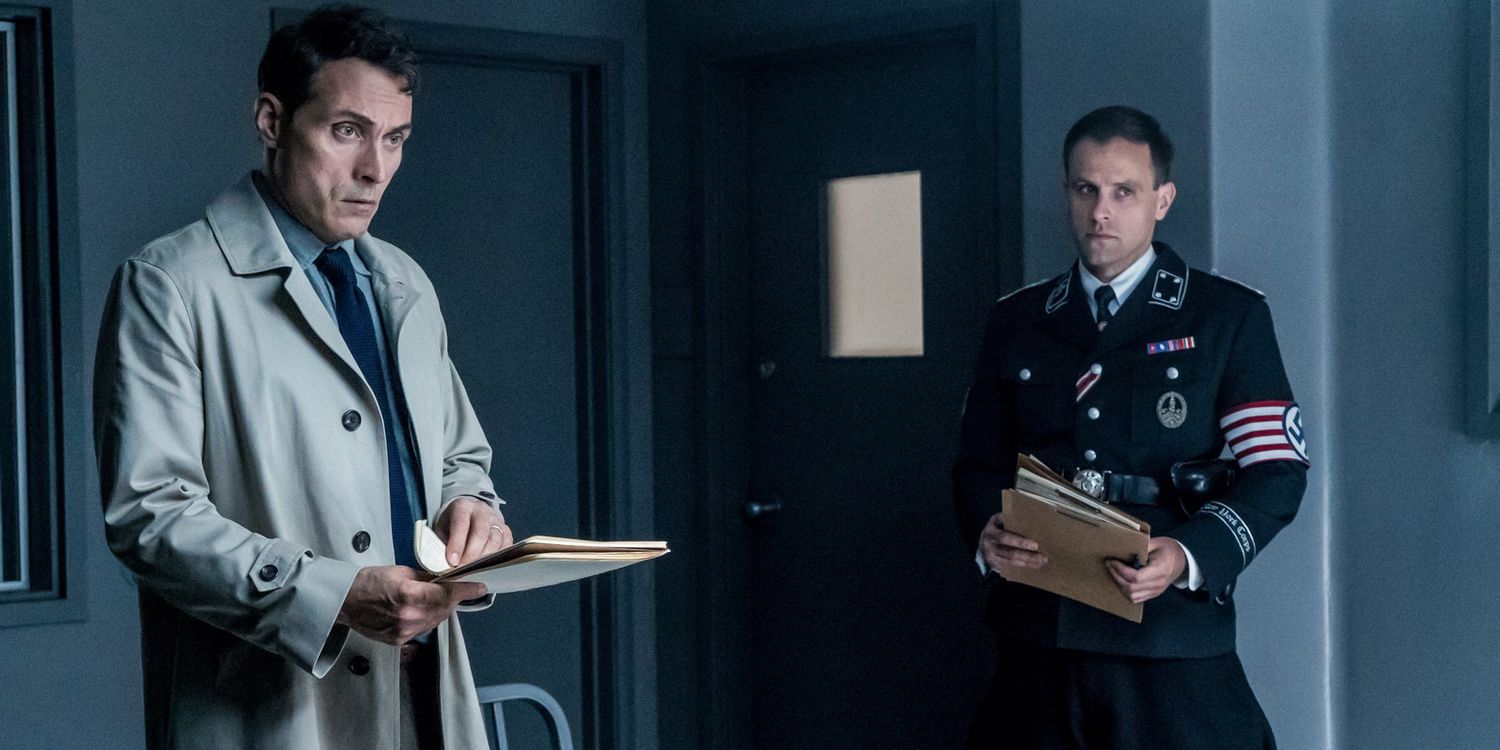Season 1 of The Man in the High Castle ended with a bit of a mind-blowing reveal. The alternate history nightmare that served as the impetus for Philip K. Dick's novel of the same name and the series developed by now-departed showrunner Frank Spotnitz was suggested to be exactly as the viewer saw it – a timeline altered at some crucial juncture to become a twisted version of the audience's reality. The revelation was witnessed by Trade Minister Nobusuke Tagomi (Cary-Hiroyuki Tagawa), adding another layer of peculiarity to the somewhat surreal element of a possible future discovered in the filmstrips collected by the titular Man in the High Castle.
The reveal did as so many television shows do these days: Rather than bring the first season to a definitive close, it acted as the precursor to more – an introduction to, and assurance of, a much larger story ahead. While taking this particular storytelling route can often feel reductive, in that it ostensibly diminishes the importance of the season you just watched, turning it into an advertisement for the already-greenlit (in most cases) second season, the attention paid to whetting the whistle of those watching can have an unexpectedly positive outcome. That's certainly the hope with shows like Cinemax's Outcast, Hulu's The Path, and more recently, HBO's Westworld. All three shows ended their first seasons with what felt more like opening remarks instead of definitive first season conclusions. The intimation being something far grander in scope is on the horizon and that you, dear viewer, are in for a treat so long as you agree to come back. That's essentially the tactic employed by Amazon with its expensive-looking series. It's essentially saying the first season is a proof of concept and now that concept will turn into a far more engaging story.
In addition to the promise of more, what made The Man in the High Castle season 1 work was the dreadfulness of its "What if?" conceit and that it was wrapped up in a past the audience new did not happen. Unlike the supposedly far flung setting of the recently liberated Hosts of Westworld, the story of a Nazi-controlled U.S. didn't presage a complicated future; it told of a near miss and the fear of what could have been (well, until recently). But season 2 is tasked with doing so much more. The series can't rest on the laurels of a compelling conceit alone; it has to develop that conceit into a story worth following, one that is capable of presenting, exploring, and challenging new ideas along the way – all through the eyes of its characters.
Thankfully, The Man in the High Castle has a large ensemble that has been flung far and wide when season 2 begins, offering myriad storytelling possibilities within the sound framework of history gone wrong and a future that may actually be up for grabs. The season 2 premiere, 'The Tiger's Cave', wastes no time in getting the new character threads set up, introducing new elements into two primary storylines without making it feel as though the characters have been retro engineered to better fit with the new season's emerging storyline.
Chief among them is Juliana Crane (Alexa Davalos), who last season felt awash in the mystery of the resistance, the filmstrips, and the question of who the Man in the High Castle really was and whether or not he even existed. Juliana's character was burdened by the ambiguities of her story, so aside from a willingness to place herself in harm's way for some answers to questions that felt at times unasked even by her, there wasn't much in the way of an actual character there. Still, as a plot engine, Juliana's misadventures in the Neutral Zone helped define the edges of the actual story the show was trying to tell. The idea of a resistance standing up to a ruthless authoritarian government is nothing new, but without the glimmer of an endgame watching can feel as hopeless as the situation in which the characters find themselves.
Although the first few episodes don't necessarily offer a light at the end of the tunnel, they do chase off some of the lingering questions from season 1 – namely, the mystery of the filmstrips and who the Man in the High Castle really is. As it turns out, he's a chain smoking loner named Abendsen Hawthorne (played by Stephen Root), who doesn't like to be asked too many questions – or any at all, really. The introduction of Abendsen takes a tremendous amount of pressure off the series moving forward and makes a compelling case for other television series dabbling in mysteries to know when to stop feeding the secrecy and instead give the audience something to digest. It doesn't take much, as 'The Tiger's Cave' only seeks to better understand the nature of the filmstrips and to confirm there is an actual Man in the High Castle before shuffling Abendsen off screen. The idea that the filmstrips offer a glimpse at an uncertain future further underlines the eeriness of the series' concept, insulating it from the depletive effects too much exposure can have on an idea as unsettling as this.
As a way to maintain the sense of intrigue, though, the season premiere installs a safety device in the form of Callum Keith Rennie's Gary Connell, who is intent on murdering Juliana following her introduction to Abendsen. The resistance's paranoia and willingness to kill to protect what they see as an ace up their collective sleeve puts them in an interesting moral gray area that becomes the umbrella under which so many of the season's other, sometimes disparate, storylines can be found.
In season 1, Joe Blake (Luke Kleintank) was ostensibly the series' co-protagonist, a double agent working for the Nazi regime, who had conflicting emotions about his role in the search for the filmstrips and in rooting out the resistance. In season 2, Joe's inner conflict is made manifest with the introduction of his father, Reichsminister Martin Heusmann (Sebastian Roché). The thread takes Joe to Berlin, far away from Juliana and Rufus Sewell's Obergurppenführer John Smith, and the result is the creation of far more breathing room for all three storylines, allowing them to comingle in surprising ways as the season progresses.
And that is saying nothing of what's unfolding in the Japan-controlled territory of the former U.S. West Coast. Frank Frink (Rupert Evans), Ed McCarthy (D.J. Qualls), and Robert Childan (Brennan Brown) find themselves embroiled in a high-pressure scam involving the Yakuza, while Trade Minister Tagomi and Inspector Kido (Joel de la Fuente) attempt to untangle their own mysteries in what appears to be the lead up to a war with Germany.
It is odd to say, but at times during the first four episodes, The Man in the High Castle almost has too much intrigue in place; it almost has too much going on. As was the case with season 1, the various story threads make for compelling avenues to travel, but without a clear destination in mind, those travels begin to look an awful lot like aimless wandering. There are plusses and minuses to this approach. Season-long arcs are allowed to unfold more slowly and their predictability is greatly reduced. But there is a difference to being unable to see where the story is headed and wondering if it has a destination in mind at all. That may not be the case here, as the second half of the season may double back to some of the narrative's earlier objectives, to give them a greater sense of significance moving forward. Hopefully this will prove to be true, as this year has provided The Man in the High Castle with a rare opportunity to mine its chilling concept for more than genre thrills or the terrifying site of abhorrent iconography and ideals being normalized.
-
The Man in the High Castle season 2 is available in its entirety on Amazon Prime Video.




